BRASIL. Rio de Janeiro. The multitude of bird songs around Thiago seems to carry his voice as he speaks. In 2018, he moved to a property surrounded by a green forest belt 50 km from Rio, the Fundaçao Abismo (the Abyss Foundation). He wanted to make a dream reality: “to create a space where I could have the freedom to do the artworks that are not exactly welcomed in conventional museums or galleries”
Life’s continuous change
The unconventionality of this 40-year-old Brasilian artist lies in the experience produced by his works. He uses a wide range of media: photography, sculpture, installation, video, and painting. Thiago, like the poet, explores life and death revealing images of the unknown.
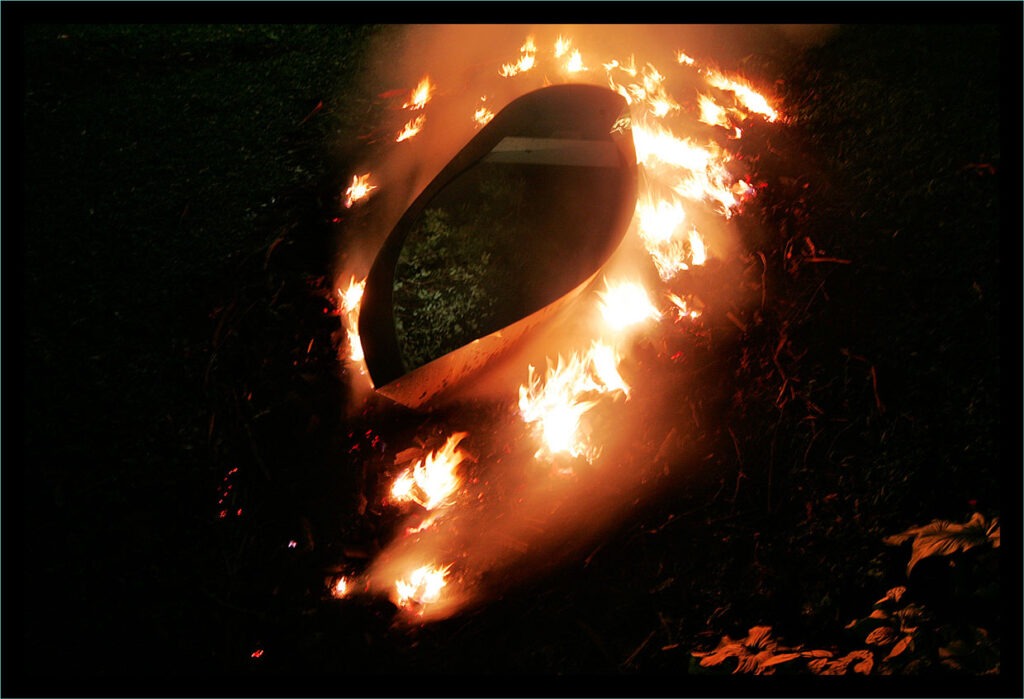
His works are not set to last forever within the museum’s walls. They mingle with the environment and decay. “I have works with fire and water and even concrete that are fluid and change over time.” He acknowledges that an art piece does not last forever. “Even the frescoes that were made thousands of years ago will vanish. Art sells the false promise Ars longa vita brevis (brief life, and long art)… but art dies too. Our time on this planet is an eye blink in the geological scale of time, the fact that part of our production can survive our time on earth doesn’t mean that art lasts forever, even the sun is gonna die one day.”
For Thiago art, like life, is ephemeral, not everlasting. Therefore, art’s mutability is foreign to the museums’ sacralization. “A museum determines that what’s inside its walls is art and what’s outside is not art.” His works escape this man-made rigidity, they dialogue with nature.
There is no separation between what’s inside and what’s outside
“The world is a temple. Monotheist religions place God inside a synagogue or a mosque or a church, and by so doing, they exclude the divine from the world.” Thiago is no atheist, he believes in the oceanic feeling. In this vision, life, art, and religious feelings escape human-made limitations. “If I try to shape (the feeling), it becomes a church, therefore, too human.”
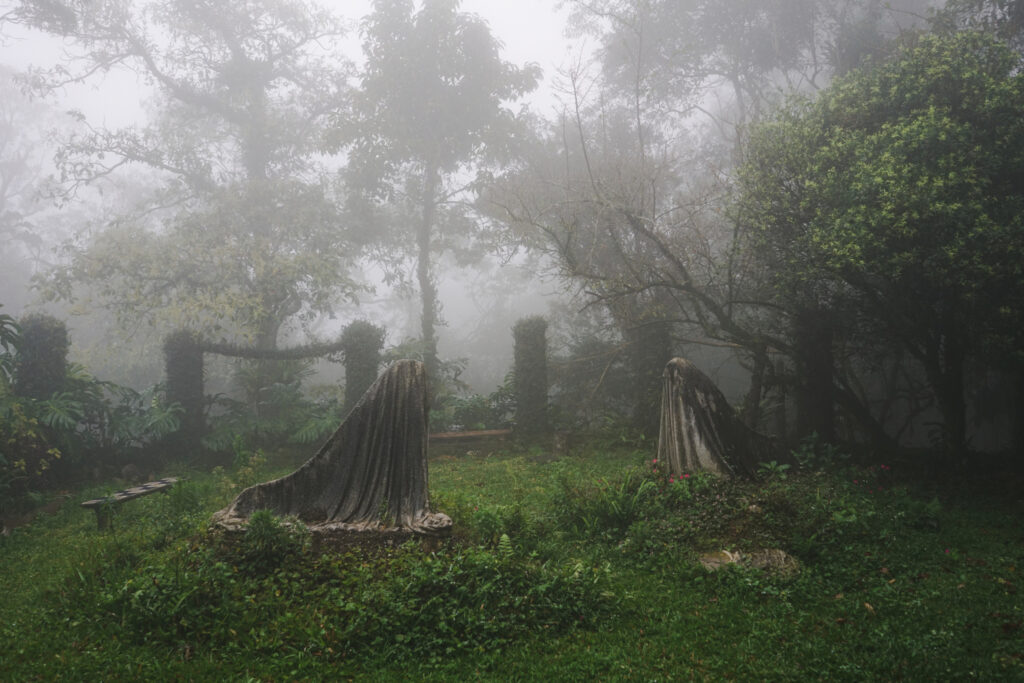
Thiago’s work reflects the fluidity between life and death, where death is not the enemy. “Death does not oppose life, fear does.”
Denial of Death
“We have a huge challenge not only with COVID-19 but with climate change, to deny it is the worst thing you can do, That has to do with the denial of death, and this, I think, with Catholicism. (…) My father was no catholic, he read to us Greek and Indigenous mythology.”
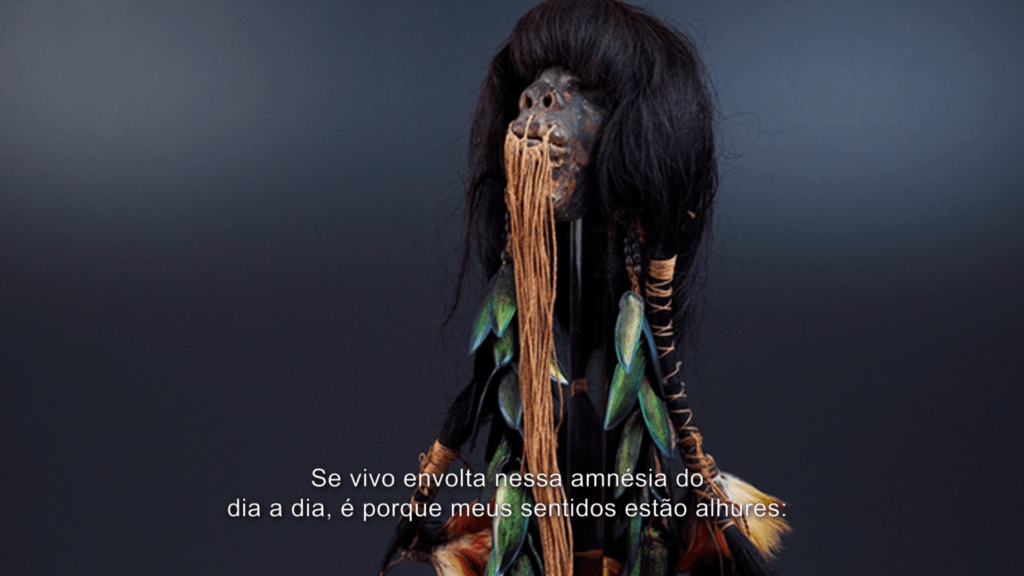
“In many countries, like the United Kingdom, the United States of America, Brasil, or Italy, as COVID-19 becomes stronger the denial of the sickness becomes also stronger. This denial might explain the rise of the extreme right-wing, or of the flat earth people. That’s people who don’t want to look at death because is painful.”
Towards regeneration
During the last years, Thiago “planted over 300 trees. We have a farm and we use permaculture to regenerate the soil and biodiversity. We need vegetable eroticism, to make more diversity, more flowers. I’m trying to be like a bee.”
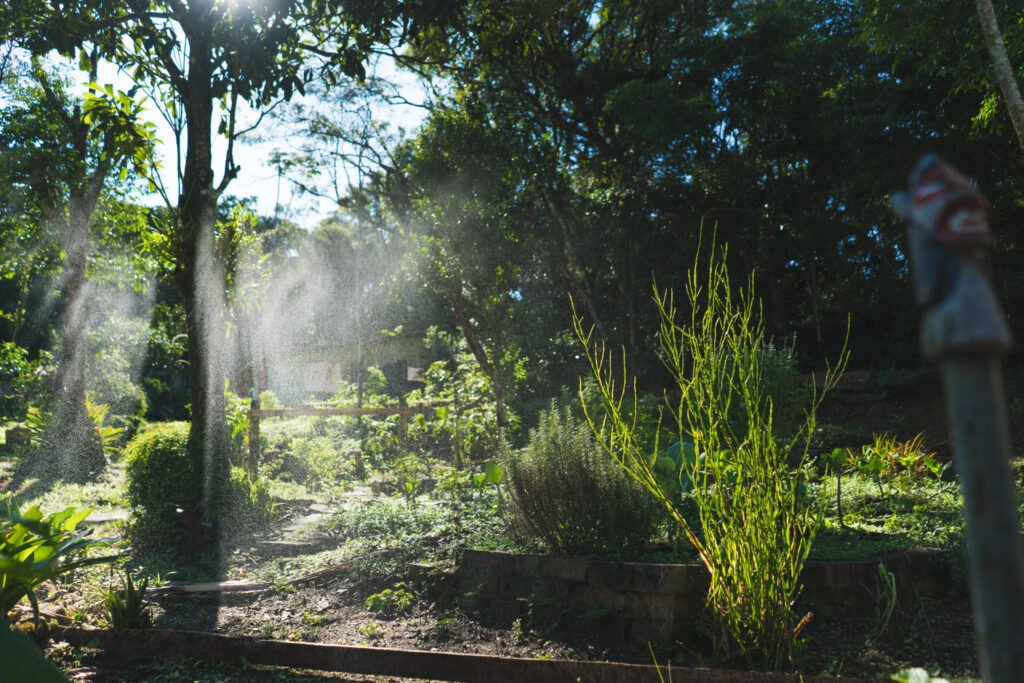
Carl Sagan enthusiast, Thiago collaborates with scientists such as ornithologists, botanists, and geologists. Also with anthropologists. At the Foundaation, they engage with plants and animals: “we want to talk to the birds.” The intertwining of knowledge is also needed for the construction of a new lifestyle to face the challenges ahead.
The artist as the prophet
“Artists train their sensibility, they can see things before they happen because their senses are more accurate. I’m not talking about mystical things, I talk about the senses, my eyes, my ears, and my nose are more sensitive”. Their trained sensitivity can lead the way, even in terms of urbanism.
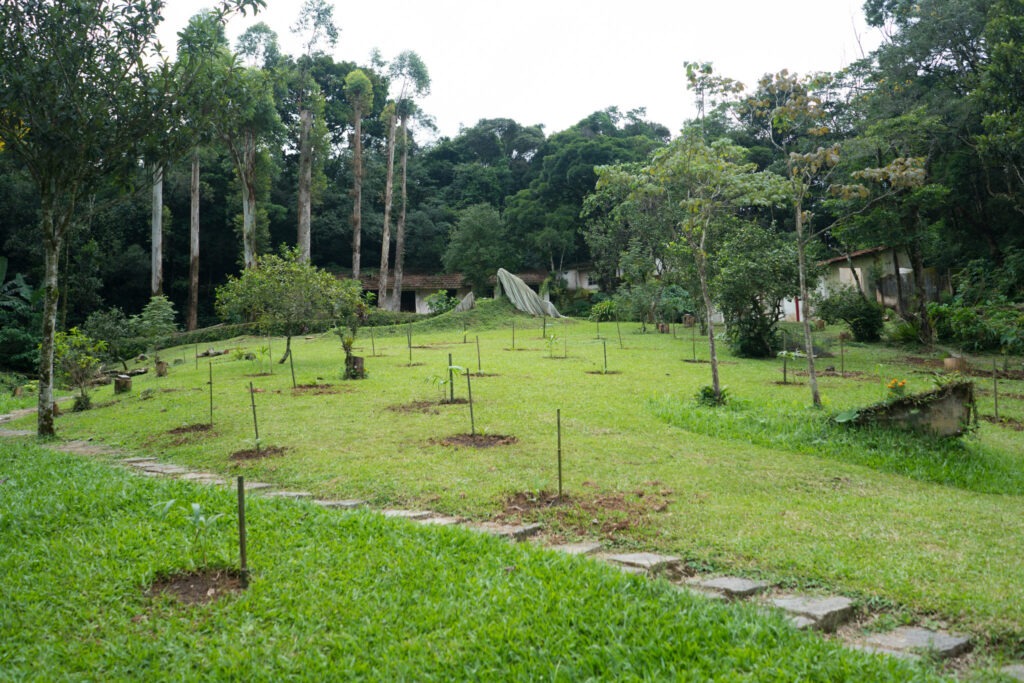
“As artists, we send a message. The paradox of communication is that people might misinterpret it. (…) We can be more accurate in communicating but we cannot be responsible for the audience’s interpretation of a work. But we have to try to (make the message come across) since scientific evidence suggests something even more catastrophic is coming.”
The message: we die as we live
For Thiago, the link between life and death is so apparent that he believes we die as we live. “We have to learn to die. To accept we are gonna die to live better, we keep denying this with heaven. Heaven is here. We deny sickness because we are afraid to die. I think about my death, I want to die in a nice place.” Although he has found the place where to contemplate the end of the world and he is ready, Thiago underlines he’s not willing to go just yet. He thinks about his son’s future. And he worries.
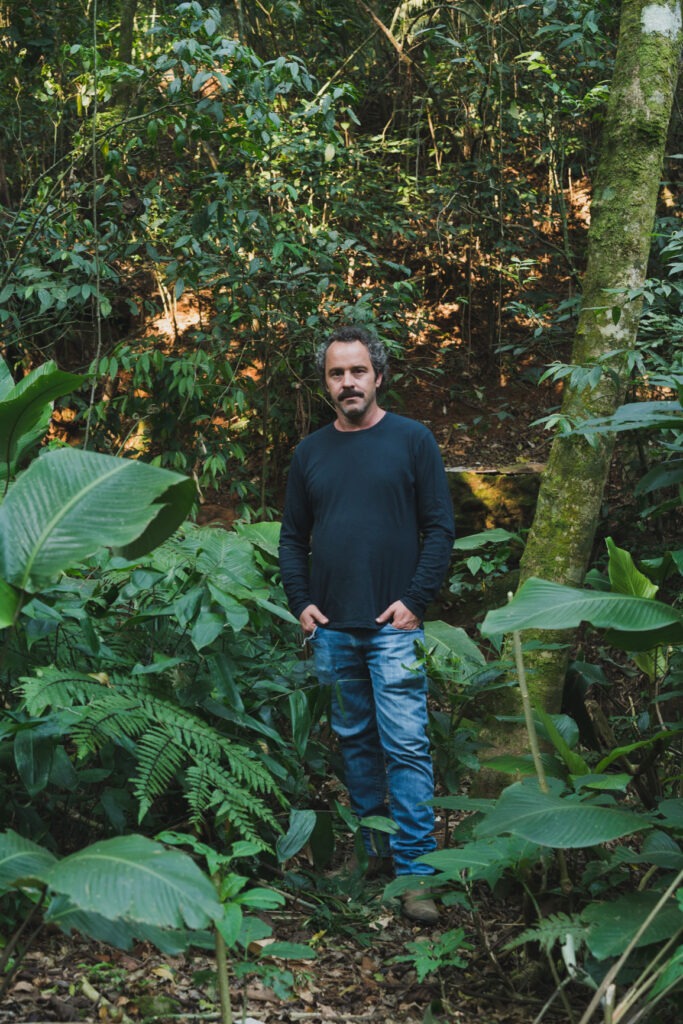
“Buy local, organic food. We are billions, how we eat and grow food can change the whole scenario.” And he knows the situation is dire with regards to climate change.
“We are educated to be fearful, trained to have fear. So it ain’t easy. We need the inspiration to face these challenges. So many people before us were so courageous in face of greater difficulties. Like during WW1, and WW2, or the Spanish flu. And also, like the Indigenous communities that have been living the apocalypse for the last 500 years. They are very used to seeing the world die and what they know disappear. We have much to learn from them.”

